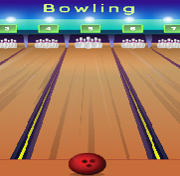Human Eye, Science Game for Kids
Learn more about the human eye by playing this science game for kids.
The Human Eye, Its Functions
Two main components make up the human eye: rods and cones. Cones are less sensitive to light than rods, but they do not contribute to central sight. They are found in the peripheral regions of your retina. Two sections make up the eyeball. One is filled with fluid and holds it in place. Here are the main eye parts. Continue reading to find out more about the functions and shapes of the eye.
Adaptation of eyes to extremes in brightness
Human eyes have evolved to recognize different light intensities and adapt to them. The intensity of self-luminous colors is not described in lightness. A candle flame that is lit in daylight appears bright but is not dangerous to the eye. A flickering candle lit in dim rooms is not bright enough to be dangerous. It should be appreciated only briefly.
Although the mechanisms that enable light adaptation are still not understood fully, the end goal is very similar to photography. Several eye mechanisms, including photopigment depletion and pupil contraction, have been identified and described. There are likely to be other adjustments, such as those involved in the visual processing for the new illumination. In the next section, we will be discussing some of these mechanisms. The adaptation phase is when the eye adjusts to new light and stabilizes its sensitivity.
Adaptation of your eye to detect periods with less contrast
One neural mechanism is responsible for the adaptation response to less contrast. The adaptation effect manifests almost immediately following the onset or adaptation stimulus. It becomes more powerful the longer the adaptation period. The adapted response is stronger than the initial one and increases confidence in the environment. Contrast adaptation can also be observed in humans, but a deeper understanding of their mechanisms is necessary.
The visual system adapts constantly to its environment. When neurons in the retina or visual cortex lose their sensitivity to high contrast environments, this is called adaptation. This mechanism allows neurons different responses to high contrast values and improves neural coding efficiency. These adaptation effects are abundant and widespread in nature, making them crucial to understanding vision's function. They are actually what explain how the human eye is able to recognize objects in different environments at different times.
The shape of the eye
The shape of the eye was believed to be a sign of a person's personality in ancient times. To reconstruct a mathematical model of the eye, the book uses mathematical formulas. These formulae were later updated to reflect technological advancements. These mathematical models of human eyes were used to create contact lenses and other vision aids. The human eye's shape can be altered by surgery or non-invasive optical methods. While some people may choose to alter the appearance of their eyes for cosmetic reasons, others need surgical correction due to vision problems.
The human eye is not an ideal sphere, but a fusion of two pieces. The anterior segment is composed of the cornea, lens, and iris. The cornea is transparent and curving and links to the larger posterior segment, which is made up of the vitreous and retina. Near the center of the cornea, the cornea measures approximately 0.5 millimeter thick. The posterior chamber measures 24mm in diameter. The limbus connects the cornea and sclera.
The functions of the eyes
The cornea and the sclera are the two layers that make up the eye. They cover almost the entire eye's surface. The sclera provides oxygen and food to the retina, while the sclera protects the retina by a fibrous, white substance. The cornea is located in the front of the outer tunic. It bends light rays towards the retina.
The amount of light that the eye receives is controlled by the iris. This circular structure covers the top of the lens. The iris controls the size of the pupil and the amount light that can enter the eyes. The clear material behind the cornea is called the lens. It changes its shape to focus images onto retina. The retina, which is located within the eye, is also found in these two areas. Each of these parts plays an important part in the functioning of the human body.










